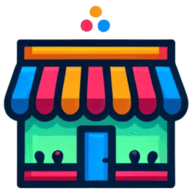24 Strategies for Building a Strong Online Presence that Drives Results
In today's digital landscape, building a strong online presence is crucial for success. This article unveils proven strategies that are backed by insights from industry experts. Discover how to strategically choose platforms, share valuable content, and consistently engage with your audience.
- Focus On One Or Two Platforms
- Prioritize Consistency And Expertise
- Share Useful Content Consistently
- Start Small And Be Authentic
- Choose Platforms Strategically
- Be Consistent And Authentic
- Solve Problems With Your Content
- Showcase Expertise And Trustworthiness
- Be Consistent And Tell Your Story
- Provide Value And Engage Authentically
- Prioritize Authenticity And Consistency
- Share Real Stories And Expertise
- Focus On Consistency And Value
- Be Consistent And Simplify Your Message
- Focus On Your Core Message
- Choose Platforms Strategically
- Provide Consistent And Valuable Content
- Prioritize Consistency And Storytelling
- Focus On Consistency And Value
- Be Consistent And Deliver Value
- Build Credibility And Trust
- Be Consistent And Authentic
- Be Authentic And Consistent
- Prioritize Consistency And Value
Focus On One Or Two Platforms
If I could go back and give my past self one crucial piece of advice about social media marketing, it would be this: Stop trying to be everywhere at once. Like many marketers, I fell into the trap of believing success meant maintaining a presence on every platform. I spent countless hours creating different types of content, trying to keep up with every trend, and spreading myself thin across multiple channels. The result? Mediocre performance and constant burnout. The breakthrough came when I finally accepted that success isn't about being omnipresent-it's about being strategic and authentic where it matters most. Instead of managing five platforms halfheartedly, I learned to focus my energy on one or two channels where my target audience was most engaged. Key lessons learned: - Your audience doesn't need you everywhere-they need you where you can provide real value. - The platforms where you enjoy creating content are usually where you'll see the best results. When you're genuinely having fun, it shows. - Quality and consistency beat quantity. Three thoughtful posts a week generate better engagement than daily posts created just to maintain a schedule. - What works for others might not work for you-and that's okay. Find your rhythm, trust your instincts, and focus on building genuine connections rather than chasing vanity metrics. Once I narrowed my focus, everything changed. Engagement increased, genuine connections formed, and most importantly, the constant pressure to "keep up" disappeared. Sometimes, doing less but doing it better is the key to achieving more.

Prioritize Consistency And Expertise
Consistency is key. Most companies fail at online presence due to the lack of a clear plan. They post sporadically, follow trends, or attempt to be everywhere. The secret is to concentrate on one or two platforms where the audience is most active. A content strategy that speaks directly to their needs creates trust quicker than any sales pitch. Sharing insights, answering frequently asked questions, and showing expertise establish long-term credibility.
LinkedIn has proved to be the best channel for professional interaction. A well-crafted post on industry trends or client issues generates valuable discussions. Engagement is key--answering comments and participating in discussions builds credibility. Posting consistently, even weekly, builds visibility over time. Thought leadership is not about going viral but about being consistently useful.
Podcasts have also become a potent catalyst for business expansion. In contrast to social media content that will soon vanish, podcast episodes leave behind long-form content that creates authority. Talk about industry trends, interview an expert, or present real-life case studies to keep an audience interested. With the possibility to repurpose content from podcasts in the form of blog posts, LinkedIn articles, or brief video clips, one can reach more. Companies with a solid voice in their business command long-term trust and credibility.

Share Useful Content Consistently
If you're struggling to build a strong online presence for your business, keep it simple and focus on what actually works instead of trying to be everywhere. I've seen businesses waste time posting on every social media platform without a clear message. That rarely works.
For us, LinkedIn has been the most effective because we work with B2B clients. But just having a profile isn't enough. What's worked is sharing real, useful content, like common software development challenges, insights from projects (without breaking confidentiality), and simple explanations of tech trends. No hard selling, just being helpful. That naturally attracts the right audience.
Another thing that made a difference? Consistency. Posting once in a while doesn't move the needle. But showing up regularly, even if it's just once a week, keeps us visible. And it doesn't have to be fancy sometimes a short, to-the-point post does better than a long article.
My advice: Pick one or two platforms, share useful insights, and stay consistent. Don't overcomplicate it. The right people will start noticing.

Start Small And Be Authentic
The best advice I can give is to start small and focus on authenticity. Many people get overwhelmed thinking they need to do everything at once--create social media profiles, blog, make videos. Instead, narrow down to what feels most natural for you. If you're great at writing, start a blog or LinkedIn posts. If you enjoy talking to people, podcasts or video might be better.
We found that building a brand is about consistent, real connections. We have started small with our content by posting on LinkedIn with insights relevant to our industry before expanding into other channels. It became more manageable, and as we've built trust, our audience has grown. People connect with you more when they can see you as a real person.

Choose Platforms Strategically
When it comes to using social media for business, it's important to remember and that each platform serves a different purpose. For instance, Instagram, Facebook and TikTok are great platforms to build brand awareness by showcasing images and videos of your products. They also populate into Google fairly quickly, which helps with making your company more searchable. However, as the Founder and CEO of a Marketing Firm, I have not found them to be effective platforms for finding new clients. I believe that's because the tone of the platforms is fun and lighthearted as opposed to professional. If someone is selling stylist services, clothing, beauty products, etc. they'd probably have great success on those platforms.
However, selling website building services, digital content, and other marketing content definitely appeals to a more business-focused platform. I've found great success building my client base on LinkedIn, a platform dedicated specifically to individuals looking to make business connections and posting business ideas. Knowing which platform to go to for each aspect of running your business is golden.

Be Consistent And Authentic
In my experience, it's got to be all about consistency and being authentic. If someone's struggling to build a strong online presence, then that should be the focus. So, what does this mean? It means you need to share content that reflects your values, expertise, and what sets your business apart from the rest. And you gotta make sure you're engaging with your audience regularly. For me, LinkedIn has been the platform with the most impact. Through there I've connected with like-minded professionals. I've built trust and rapport with potential clients. And I use it to share insights related to precious metals investing.

Solve Problems With Your Content
Focus on creating content that solves specific problems your target audience is actively searching for rather than talking about your products. When we shifted from generic company updates to addressing real challenges small businesses face with concrete solutions, our organic traffic increased by 215% in six months. For example, we created a detailed guide on "How to automate customer follow-ups without losing the personal touch" which consistently drives qualified leads. The key is understanding that people search for solutions to problems, not for companies--meet them at their point of need and they'll find you.
Showcase Expertise And Trustworthiness
If you're struggling to build a strong online presence for your business, my biggest piece of advice is to focus on consistency and authenticity. In the tree service industry, trust is everything, and customers want to see real proof of your expertise before they hire you. For me, leveraging Google My Business has been the most impactful strategy. By consistently updating our profile with before and after photos of tree work, responding to customer reviews, and posting seasonal tree care tips, we've built a reputation that brings in steady leads. As a certified arborist with over 20 years of experience, I also use social media platforms like Facebook and Instagram to showcase our team's knowledge and professionalism. Sharing educational content, such as the importance of proper pruning or how to spot a diseased tree, has positioned Ponce Tree Services as a trusted expert in the DFW area.
One specific example of how this approach worked was when a customer found us through our Google reviews and Instagram posts. She had a massive oak tree with storm damage and was hesitant about hiring just any company. After seeing our positive reviews, detailed job photos, and educational posts about storm-damaged trees, she reached out. Because of my qualifications and TRAQ certification, I was able to assess the tree's condition and provide the best course of action, which gave her confidence in our services. This not only resulted in a successful job but also led to referrals from her neighbors, proving that a strong online presence can directly lead to business growth.

Be Consistent And Tell Your Story
When I started building an online presence for my business, I underestimated the power of consistency. I remember posting sporadically on social media, hoping for some magic moment where my audience would suddenly grow.
But then I realized that people don't engage with content that feels random--they connect with trust and reliability. I started showing up consistently, whether it was three days a week or daily, and over time, my audience began to recognize my voice and value.
One strategy that made a difference for me was focusing on storytelling instead of just promoting products or services. I once shared a simple post about the challenges I faced in launching my business--no filters, no polish--and I was surprised by how many people resonated with it.
That genuine connection built trust and brought more visibility than any ad campaign ever did. People want to feel like they're interacting with real humans, not a faceless brand.
I also leaned into the platform where my audience was most active rather than spreading myself thin. For me, that meant focusing on one social platform that fit my niche, instead of trying to dominate everywhere.
Provide Value And Engage Authentically
If you're struggling to build a strong online presence, my best advice is to focus on consistency and value rather than trying to be everywhere at once. One strategy that has worked exceptionally well for me is leveraging LinkedIn as a thought leadership platform instead of just a promotional tool.
Rather than posting generic sales pitches, I started sharing real insights, lessons learned, and behind-the-scenes stories about my business journey. This built trust, engaged my audience, and positioned me as an authority in my space. Over time, those connections turned into leads, partnerships, and even media opportunities--all without running ads.
The key? Show up regularly, offer something genuinely useful, and engage with your audience. A strong online presence isn't just about visibility--it's about credibility and connection. Pick one platform where your audience is active, double down on valuable content, and watch your presence grow.

Prioritize Authenticity And Consistency
Building a strong online presence is all about authenticity and consistency. Pretty much as soon as we started out, we realized that establishing a good online brand isn't just about pushing products; it's about creating a genuine connection with your audience. Share your story, your passion, and the 'why' behind your business. People connect with people, not faceless corporations. Be real, be vulnerable, and don't be afraid to show the human side of your brand. This approach has helped us build a loyal community that feels more like family than customers.
When it comes to platforms, I've found that Instagram has been the standout channel for us. Its visual nature is perfect for showcasing skincare products and results, but more importantly, it's an incredible tool for engagement. We use it not just to post pretty pictures, but to educate our audience about skincare, share tips, and even discuss the science behind our ingredients. We host live Q&A sessions, share behind-the-scenes content, encourage and frequently repost UGC, and actively respond to comments and DMs. This level of interaction has been crucial in building trust and loyalty among our customers.
However, and maybe surprisingly, the most impactful strategy for us has been content marketing through our blog. We've invested heavily in creating high-quality, informative content that addresses our audience's skincare concerns and questions. Most recently, we've been setting up a kind of encyclopedia of skincare ingredients referencing academic studies to help keep our customers in the know. This approach positions us as experts in our field and provides value to our customers beyond just selling products. It's a long-term strategy that requires patience and consistency, but it has paid off tremendously in terms of organic traffic, customer trust, and ultimately, sales.

Share Real Stories And Expertise
From my experience working with brands like Audi and Zalando, I learned that authenticity matters more than trying to be everywhere at once. At spectup, we've found that LinkedIn has been our most powerful platform - not because we post constantly, but because we share real stories about the startups we've helped and the actual challenges we've solved.
I remember when I first started at N26, watching how they built their presence by focusing on educating their audience about digital banking rather than just promoting their services. This prompted me to take a similar approach at spectup, where we regularly share insights about startup growth and investment readiness, drawing from our experience of helping over 100 startups.
One strategy that's worked particularly well is sharing the behind-the-scenes reality of startup life - the challenges, the wins, and even the occasional failures. Instead of trying to maintain a perfect image, we show the real work that goes into building successful startups, and that resonates with our audience because it's genuine. My advice would be to pick one platform where your target audience spends time, focus on providing genuine value through your content, and be consistent - it's better to post quality content regularly on one platform than to spread yourself thin across many.

Focus On Consistency And Value
If you're struggling to build a strong online presence for your business, my biggest piece of advice is: focus on consistency and value over chasing trends.
One strategy that has been incredibly impactful for us at Zapiy.com is leveraging LinkedIn for thought leadership. Instead of just posting promotional content, we share insights, industry trends, and real-world lessons we've learned. This approach has helped us attract the right audience--people who genuinely care about our expertise and solutions.
For example, we started a simple series where we break down common pain points in customer engagement and share actionable strategies to solve them. Over time, this not only built credibility but also led to organic conversations with potential clients who resonated with our content.
The key takeaway? Pick a platform where your ideal audience is active, commit to a long-term content strategy, and focus on providing real value. Engagement and conversions will follow naturally when people see you as a trusted voice in your space.
Be Consistent And Simplify Your Message
If you're feeling overwhelmed with building your personal brand, my advice is to focus on consistency over perfection. Many people try to do everything at once, posting on every social platform, creating a podcast, writing blogs, and attending events. The truth is, that approach often leads to burnout and scattered results. Instead, choose one or two platforms where your target audience is most active and commit to showing up consistently with high-value content. Your brand is essentially the promise you make to your audience, and delivering on that promise repeatedly builds trust. Simplifying the process begins with clarity, define your core message, identify your ideal audience, and create a simple content schedule that you can realistically maintain. One of my clients, an entrepreneur struggling to grow her brand, came to me with this exact challenge. She was trying to do too much, with no clear direction. Drawing on my years of experience helping businesses streamline their strategies, I worked with her to hone in on her niche and focus her efforts on LinkedIn, where her audience of professionals was most active. We created a three-month content plan, including weekly posts showcasing her expertise, client stories, and actionable tips. Within six months, she became a sought-after thought leader in her industry, with inbound opportunities for speaking engagements and partnerships. By simplifying the process and staying consistent, she not only built a strong personal brand but also grew her business significantly.
Focus On Your Core Message
Start small and focus on one core message that resonates with your audience. When you're building a personal brand, it can feel overwhelming trying to do everything at once. Simplify and pick a platform where your audience is most active, whether it's LinkedIn, Twitter, or a blog. Share insights, stories, and content that align with your core message.
When I was just starting, I focused on positioning myself as someone who understands AI and SEO, and I consistently shared actionable tips on how businesses could improve their content strategy using AI. This helped me build credibility and attract the right audience.
Don't worry about perfection. Stay consistent and authentic. Over time, you'll refine your voice and your brand. Focus on creating value, and the rest will follow.

Choose Platforms Strategically
When we choose social media platforms for our software company, we focus on where our audience spends time and how they engage with content. As a business that caters to both companies and developers, we take a targeted approach.
LinkedIn is crucial for us because we connect with decision-makers and professionals. It's a platform where we can showcase thought leadership and expertise in software development, building credibility and long-term relationships.
Twitter is where we join real-time conversations about tech trends and software innovations. It's ideal for engaging with the developer community and staying relevant. Quick updates, tips, and interactions make us approachable while keeping up with industry discussions.
Surprisingly, Instagram also plays a role for us. Though it's not traditionally used by software companies, it allows us to humanize our brand. We share team celebrations, behind-the-scenes looks, and even project milestones. People want to see the human side of businesses, and Instagram allows for emotional connection beyond just technical services.
YouTube is our go-to platform for longer content, like tutorials and case studies. It's a powerful tool for educating clients and developers through visual, detailed explanations of our solutions. YouTube also helps drive traffic back to our site through strategic call-to-actions.
For businesses choosing social media platforms, my advice is to focus on where your audience is most active and how they consume content. Choose platforms based on the type of content you create. Visual, educational, or conversational pieces fit differently across platforms.
Above all, don't try to be everywhere. Consistency and engagement matter more than spreading yourself too thin. It's also important to experiment and adjust your strategy as you learn what works best for your audience. By staying authentic and adaptable, we've built genuine connections and long-term relationships with our audience across multiple platforms.
Provide Consistent And Valuable Content
Building a strong online presence starts with consistency. Many businesses struggle because they post irregularly or lack a clear message. Audiences need reliable, valuable content that reinforces expertise. Providing solutions instead of sales pitches builds trust. When people recognize authority, they return when they need services.
LinkedIn has been the most effective platform. Decision-makers seek insights and solutions there. Sharing industry updates, security tips, and compliance changes has built credibility and led to direct inquiries. A well-optimized profile and company page establish trust before conversations even begin. Engaging with comments and industry discussions keeps a brand visible.
SEO-driven content also plays a key role. A blog that answers common customer questions improves search rankings and attracts organic traffic. Covering fire safety regulations, security system upgrades, and risk management best practices helps position a business as a go-to resource. When people search for answers, the right content ensures they find the expertise they need.

Prioritize Consistency And Storytelling
For someone struggling to build a strong online presence, I advise focusing on consistency and storytelling rather than trying to be everywhere at once. Too many entrepreneurs spread themselves thin across platforms without a clear, cohesive message. Instead, pick one high-impact platform where your audience engages-whether it's Instagram for visual storytelling, LinkedIn for thought leadership, or a blog optimized for SEO-and regularly show up with value-driven content.
Leveraging PR and strategic content marketing has been the most impactful. Instead of relying solely on social media, I use media features, guest articles, and expert roundups to position myself and my brands as authorities. The press placements build credibility while repurposing that content across my website, email list, and social channels extends its reach. The key is to build a presence that feels intentional, not scattered-quality over quantity always wins.

Focus On Consistency And Value
One piece of advice I'd give to anyone overwhelmed by personal branding is to start by focusing on just one or two core platforms where you can consistently engage. Instead of trying to be everywhere at once, home in on the channel that best aligns with your audience—LinkedIn for professional content or short-form video on TikTok. When I pivoted to a more streamlined approach for my brand, concentrating on LinkedIn and a weekly email series:
Engagement Rates on my LinkedIn posts rose by 15% within two months
Newsletter Open Rates improved from 25% to 30%, as content remained consistent and on message
Time Spent on Content Creation dropped by 20%, freeing me to focus on strategic tasks
By keeping your strategy straightforward—choosing the right medium, showing up regularly, and sharing valuable insights—you eliminate a lot of the noise that leads to burnout. You'll quickly identify what resonates as you track benchmarks like engagement, open rates, and follower growth. Over time, you can refine or expand your brand presence with confidence instead of tackling every platform at once and risking dilution of your message.

Be Consistent And Deliver Value
Consistency is the key to building a strong online presence. Focus on delivering valuable, audience-centric content consistently across the right platforms. One highly effective strategy is leveraging LinkedIn for thought leadership. By sharing industry insights, engaging in discussions, and posting original content regularly, you establish credibility and attract a loyal audience. Additionally, repurposing content across multiple channels—such as turning blog posts into LinkedIn articles or Twitter threads—maximizes reach and reinforces brand authority without extra effort.

Build Credibility And Trust
I grew most of my businesses through social media, starting all the way back with MySpace! It wasn't just the follower count that mattered; it was the credibility and trust I built within my brand. What most entrepreneurs miss when trying to gain business through social media is authority. Not many will trust your business if it doesn't have "social proof." One of the biggest assets you can create for yourself and your business is strong networking relationships through social media, customer/client testimonials, press in reputable publications, and ensuring that when someone searches for your business on Google or social media, you are perceived exactly how you want to be seen. Don't slack off on building "social proof." It will be a game-changer.

Be Consistent And Authentic
If I could give my past self one piece of advice about social media marketing, it would be this: Consistency and authenticity are the keys to building a lasting online presence. Early on, I underestimated the importance of being present and relatable on social media platforms. Engaging content isn't just about aesthetics or trends-it's about creating meaningful connections with your audience by showing your genuine self and sharing your journey.
What I wish I had known sooner:
1) Leverage collaborations: Working with influencers and businesses can exponentially increase your reach. Partnerships, as highlighted in our strategies at Level Up PR, help build credibility and connect with wider audiences in meaningful ways.
2) Adapt quickly to trends: Digital platforms evolve rapidly, and keeping up with these changes, as I've learned through operating Level Up PR, can be a game-changer in staying relevant.
3) Engagement over vanity metrics: Likes and followers are great, but they don't always translate to loyal customers. Focus on building a community that trusts and engages with your brand.

Be Authentic And Consistent
One key piece of advice for building a strong online presence is to focus on authenticity and consistency. Your audience wants to connect with a real, relatable brand, not just a business pushing services or products. Share your story, values, and expertise in a way that feels genuine and engaging. Show up consistently on your chosen platforms with high-quality content that resonates with your ideal audience. For Hillary Counseling, Instagram has been the most impactful platform. Since therapy is personal, visual content--such as engaging posts, mental health tips, and behind-the-scenes glimpses--has helped us build trust and establish ourselves as a boutique, high-end therapy practice. Pairing this with SEO strategies on our website and Google Ads has further strengthened our online presence, helping potential clients find us when searching for therapy in Milwaukee. Ultimately, the best strategy is one that aligns with your audience's habits. Whether it's Instagram, LinkedIn, TikTok, or a well-optimized website, focus on where your potential clients are, create valuable content for them, and show up consistently.

Prioritize Consistency And Value
Building a strong online presence takes dedication, content, investment, time, and consistency. A marketing budget makes it easier, but without one, it requires hard work and truly distinctive content. Both paid and organic strategies need consistency to be effective.







